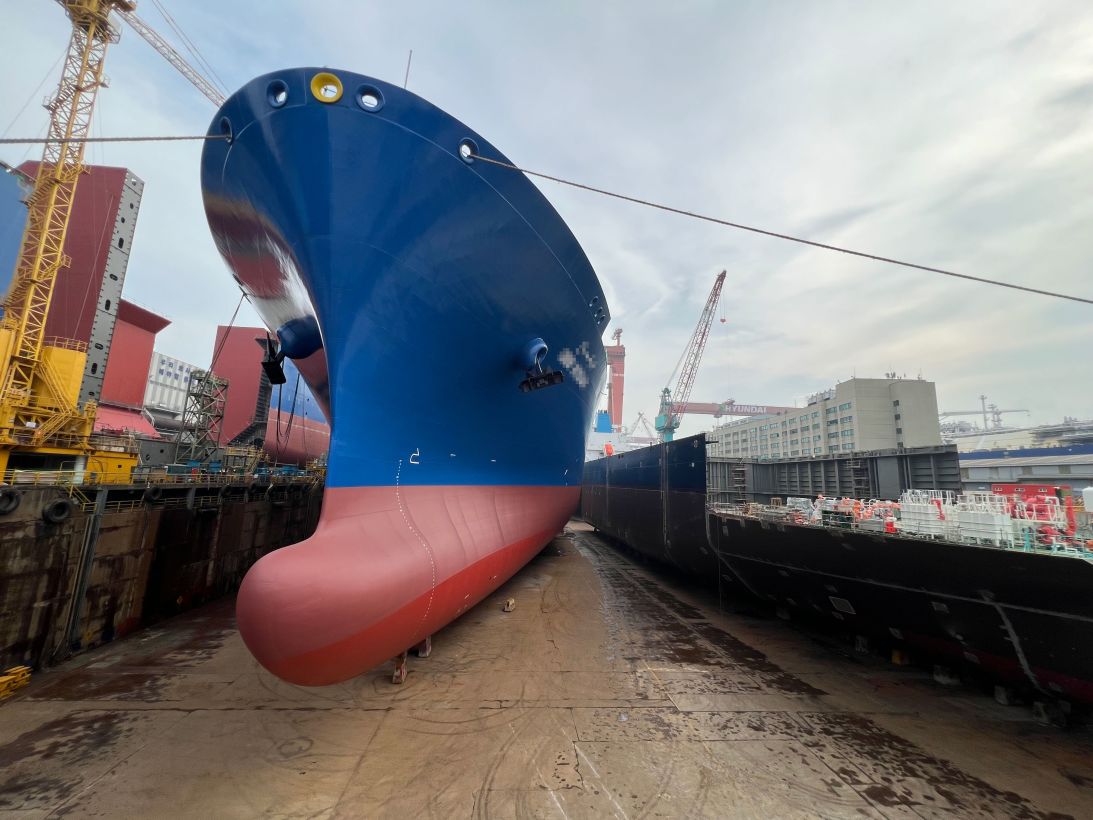World
South Korean Shipbuilders Offer Solutions to US Navy Crisis

The United States Navy’s shipbuilding programs are facing significant challenges, with officials acknowledging that many projects are running behind schedule and over budget. In light of these difficulties, two South Korean shipyards, HD Hyundai Heavy Industries and Hanwha Ocean, believe they can assist in revitalizing American naval construction.
US President Donald Trump has advocated for a revival of American shipbuilding, coining the phrase “Make American Shipbuilding Great Again.” Leaders at both shipyards assert that their expertise in producing high-quality naval vessels on time and within budget could provide the U.S. Navy with the support it desperately needs. Currently, they are manufacturing some of the world’s leading warships for the South Korean Navy, including guided-missile destroyers and submarines.
During a hearing in June, John Phelan, the US Secretary of the Navy, described the current state of US shipbuilding as “a mess.” He reported that even the Navy’s best program is six months behind schedule and 57% over budget. This acknowledgment reflects a broader, long-standing issue with US shipbuilding, which has struggled with delays and cost overruns for years.
South Korea’s Shipbuilding Efficiency
In contrast to the US Navy’s struggles, South Korea has established itself as a powerful player in global shipbuilding. During a recent visit to the Hyundai and Hanwha shipyards, officials highlighted their ability to produce vessels efficiently. At Hanwha’s facility in Geoje, for instance, a new building constructed to support a contract for four frigates was completed in just 14 months.
These frigates, measuring 122 meters and weighing 3,100 tons, will feature advanced capabilities, including vertical launch systems for air defense and anti-ship missiles. Each frigate is expected to take about three years to complete, which aligns with the time frame of the delays affecting the US Navy’s Constellation-class frigate program. The latter has been hindered by extensive modifications to its design, which is based on existing models used by the Italian and French navies.
Shipyard leaders attribute South Korea’s success to a combination of experienced personnel and effective logistics. Lee Jin, vice president at HD Hyundai Heavy Industries, noted that the average worker at the facility has been with the company for 16 years, contributing to a skilled workforce. Sal Mercogliano, a shipping expert at Campbell University, suggests that the dual focus on military and commercial shipbuilding allows South Korean yards to maintain a consistent workforce, which is vital for operational efficiency.
Challenges Facing US Shipbuilding
The US shipbuilding industry has faced challenges since the post-World War II era when it shifted much of its commercial shipbuilding to countries like South Korea and Japan. President Trump has remarked on this strategic error, emphasizing the need to reclaim the shipbuilding industry. During an August summit with South Korean President Lee Jae Myung, the two leaders reaffirmed their commitment to the “Make American Shipbuilding Great Again” initiative.
The potential for South Korean companies to assist the US Navy is promising, yet impediments remain. US laws currently restrict the Navy from purchasing foreign-built vessels, even from close allies like South Korea. Moreover, recent immigration issues at a Korean battery plant in Georgia have raised concerns about the stability of US-Korean cooperation.
Despite these challenges, Hanwha has taken steps to expand its presence in the United States, recently acquiring Philly Shipyard in Pennsylvania with plans to invest $5 billion to enhance its operations. Similarly, Hyundai aims to increase its footprint in the US market.
Merely replicating South Korea’s shipbuilding model in the US may not be straightforward. The efficiencies observed in South Korean shipyards stem from shorter supply chains, with about 90% of necessary parts sourced within a 50-kilometer radius of the Geoje facility. This proximity allows for streamlined logistics and reduced production times.
In contrast, US military shipyards often face inconsistent orders from the Pentagon, leading to hesitance in investing in new technologies that may not be utilized if funding is cut. As Carl Schuster, a former US Navy captain, points out, the unpredictable nature of military contracts discourages significant investments in modernization.
A recent agreement between the US and Finland, which will see the construction of four US Coast Guard icebreakers in Finnish shipyards, could serve as a precedent for international naval construction. Although naval regulations differ from those governing the Coast Guard, experts like Mercogliano believe there is potential to relax requirements for auxiliary and supply vessels, opening doors for increased collaboration with South Korean shipbuilders.
As the conversation around revitalizing US shipbuilding continues, Hanwha’s Jeon Yu-su expressed a clear ambition: “Yes,” he stated emphatically when asked if he envisions US warships being built in South Korea. This exchange highlights the proactive stance South Korean companies are taking to engage with the US Navy in addressing its shipbuilding crisis.
-

 Science2 months ago
Science2 months agoInventor Achieves Breakthrough with 2 Billion FPS Laser Video
-

 Health2 months ago
Health2 months agoCommunity Unites for 7th Annual Into the Light Walk for Mental Health
-

 Top Stories2 months ago
Top Stories2 months agoCharlie Sheen’s New Romance: ‘Glowing’ with Younger Partner
-

 Entertainment2 months ago
Entertainment2 months agoDua Lipa Aces GCSE Spanish, Sparks Super Bowl Buzz with Fans
-

 Health2 months ago
Health2 months agoCurium Group, PeptiDream, and PDRadiopharma Launch Key Cancer Trial
-

 Top Stories2 months ago
Top Stories2 months agoFormer Mozilla CMO Launches AI-Driven Cannabis Cocktail Brand Fast
-

 Entertainment2 months ago
Entertainment2 months agoMother Fights to Reunite with Children After Kidnapping in New Drama
-

 World2 months ago
World2 months agoR&B Icon D’Angelo Dies at 51, Leaving Lasting Legacy
-

 World2 months ago
World2 months agoIsrael Reopens Rafah Crossing After Hostage Remains Returned
-

 Business2 months ago
Business2 months agoTyler Technologies Set to Reveal Q3 Earnings on October 22
-

 Health2 months ago
Health2 months agoYouTube Launches New Mental Health Tools for Teen Users
-

 Health2 months ago
Health2 months agoNorth Carolina’s Biotech Boom: Billions in New Investments









